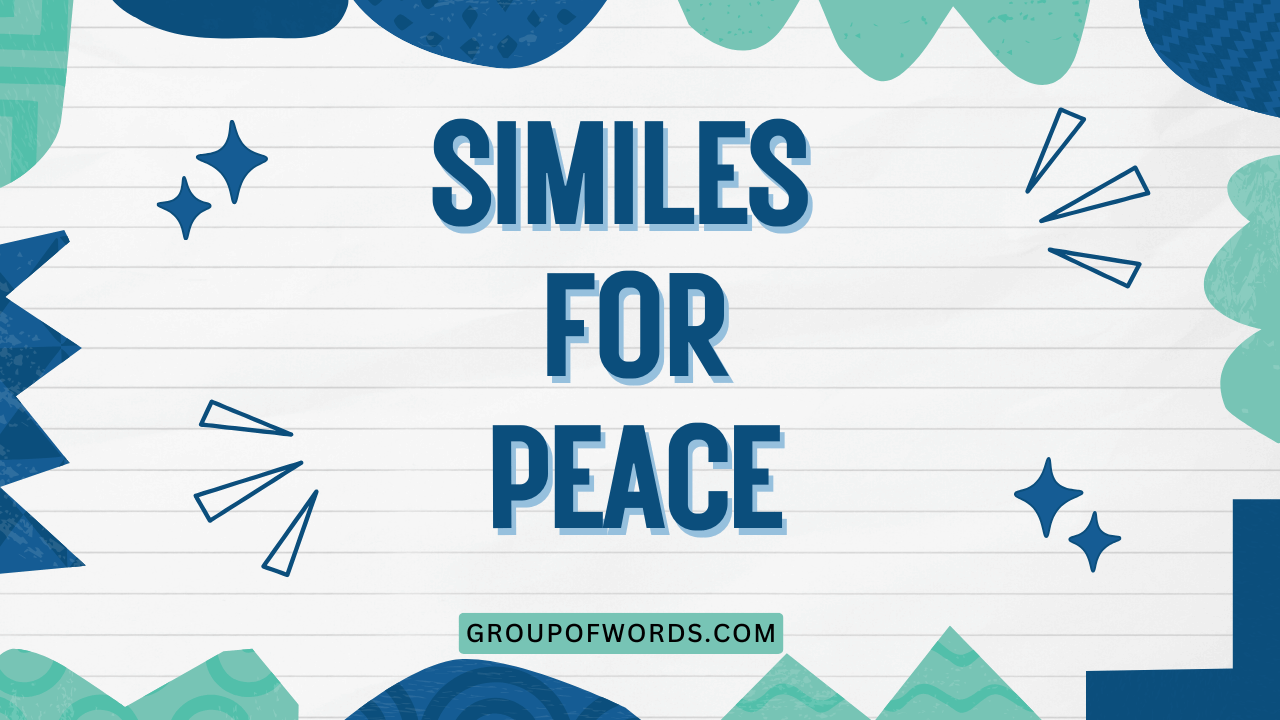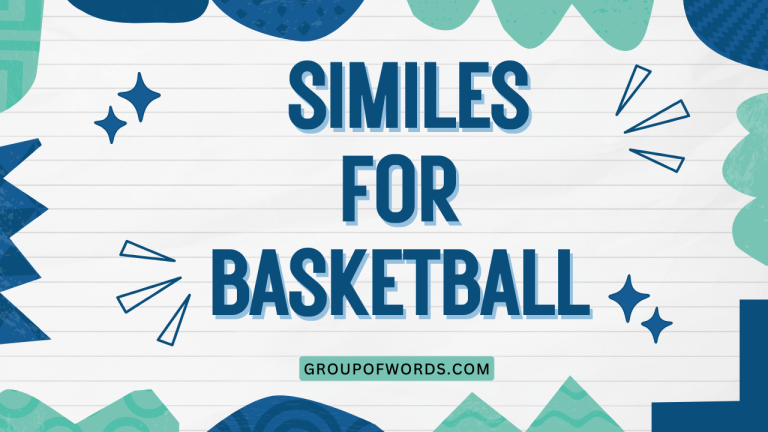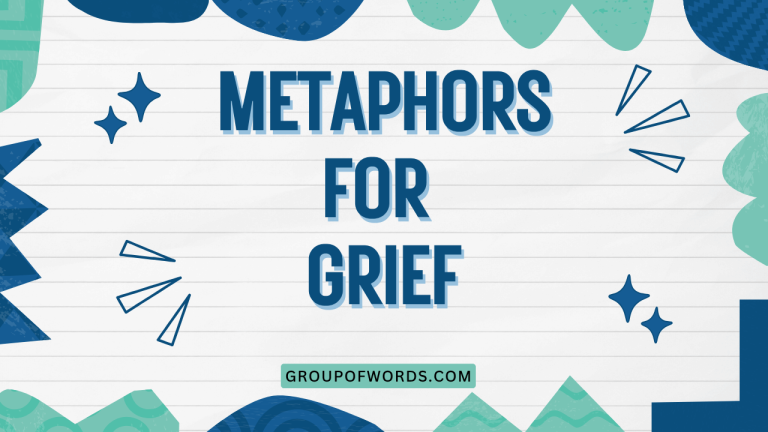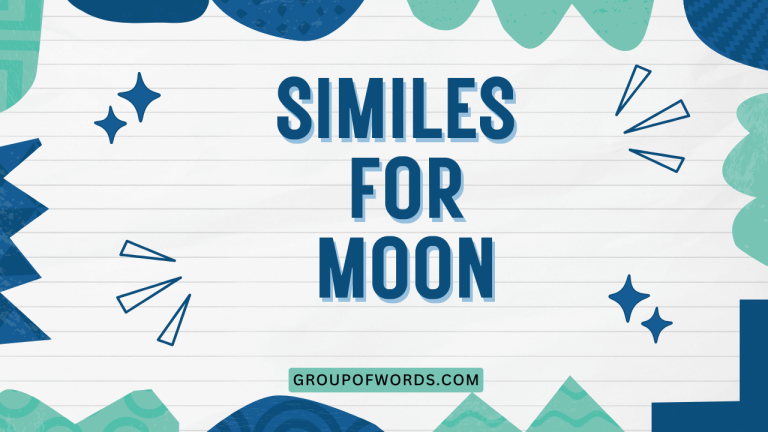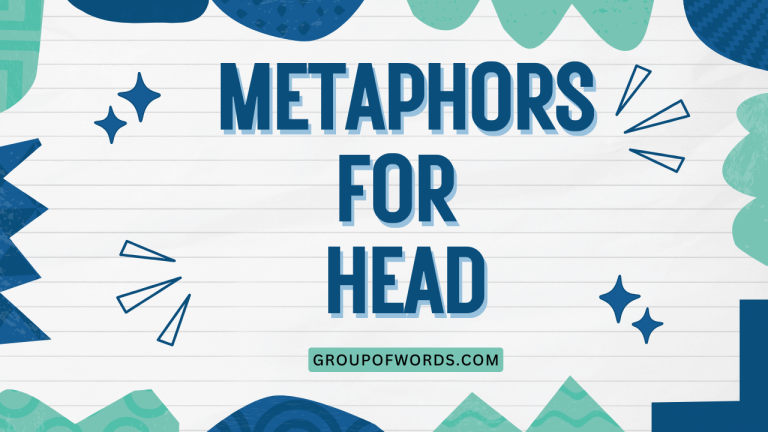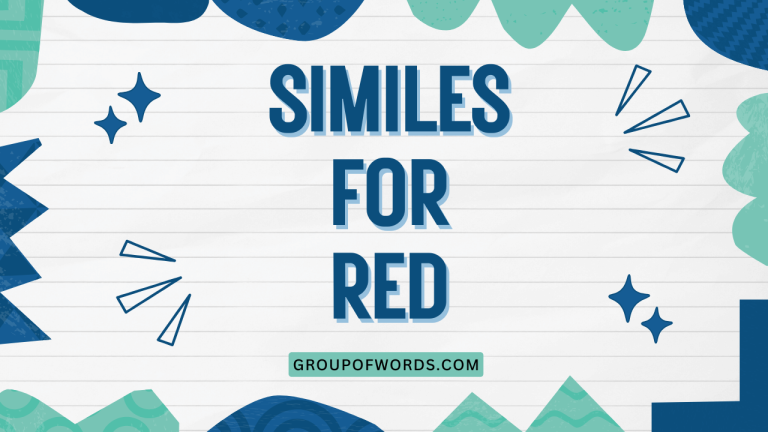Similes for Peace: Mastering Figurative Language
Understanding and using similes effectively can greatly enhance your descriptive writing and communication skills. Similes, in particular, can be powerful tools for conveying abstract concepts like peace in vivid and relatable ways.
This article provides a comprehensive guide to understanding and using similes to describe peace, suitable for English language learners of all levels, from beginners to advanced students. By exploring various examples, structural patterns, and practical exercises, you will gain a deeper appreciation for how similes can enrich your vocabulary and improve your ability to express nuanced ideas.
This article will benefit anyone looking to improve their English writing skills, especially those interested in creative writing, poetry, or simply enhancing their everyday communication. Whether you’re a student preparing for an exam, a writer seeking inspiration, or someone who enjoys exploring the nuances of language, this guide will provide you with the tools and knowledge you need to master the art of using similes to describe peace.
Table of Contents
- Introduction
- Definition of Simile
- Structural Breakdown of Similes
- Types of Similes
- Examples of Similes for Peace
- Usage Rules for Similes
- Common Mistakes When Using Similes
- Practice Exercises
- Advanced Topics in Similes
- Frequently Asked Questions (FAQ)
- Conclusion
Definition of Simile
A simile is a figure of speech that directly compares two different things using the words “like” or “as.” The purpose of a simile is to create a vivid image or enhance understanding by drawing a parallel between something familiar and something less familiar. Similes add depth and color to writing, making it more engaging and memorable.
Similes fall under the broader category of figurative language, which includes metaphors, personification, and other literary devices. Unlike metaphors, which state that one thing *is* another, similes only suggest a resemblance. This distinction is crucial for understanding the function and impact of similes in writing.
The function of a simile is to clarify, emphasize, or beautify a description. Similes can be used in various contexts, from poetry and literature to everyday conversation.
They are particularly useful when describing abstract concepts, such as peace, by relating them to more concrete or easily understood ideas.
Structural Breakdown of Similes
The structure of a simile typically involves three main components:
- The subject: The thing being described.
- The linking word: Either “like” or “as.”
- The object of comparison: The thing to which the subject is being compared.
For example, in the simile “Peace is like a calm sea,” “peace” is the subject, “like” is the linking word, and “a calm sea” is the object of comparison. This structure provides a clear and direct comparison, making the simile easy to understand.
The effectiveness of a simile depends on the strength of the connection between the subject and the object of comparison. A good simile creates a clear and meaningful association that enhances the reader’s understanding or appreciation of the subject.
The order of the elements can sometimes be varied for stylistic effect, but the core structure remains the same. For instance, instead of saying “He is as brave as a lion,” one could say “As brave as a lion, he stood his ground.” The meaning remains consistent, but the emphasis shifts slightly.
Types of Similes
While all similes share the same basic structure, they can be categorized based on their function or the type of comparison they make.
Descriptive Similes
Descriptive similes aim to provide a more vivid or detailed description of the subject. These similes often focus on sensory details, such as sight, sound, or touch, to create a more immersive experience for the reader.
Explanatory Similes
Explanatory similes are used to clarify or explain something that might be difficult to understand. By comparing the subject to something more familiar, these similes can make complex ideas more accessible.
Emphatic Similes
Emphatic similes are used to emphasize a particular quality or characteristic of the subject. These similes often involve strong or exaggerated comparisons to highlight the importance of the attribute being described.
Examples of Similes for Peace
Here are several examples of similes that can be used to describe peace, categorized by the specific aspect of peace they emphasize.
Similes with Positive Connotations
These similes highlight the positive aspects of peace, such as happiness, contentment, and well-being. They aim to evoke a sense of joy and optimism.
The following table presents a variety of similes that convey the positive feelings associated with peace. Each example is designed to illustrate how peace can be linked to other positive experiences through the use of “like” or “as.”
| Simile | Explanation |
|---|---|
| Peace is like sunshine after a storm. | Peace brings warmth and brightness after a period of difficulty. |
| Peace is as sweet as honey. | Peace is pleasant and enjoyable. |
| Peace is like a gentle breeze on a summer day. | Peace is refreshing and calming. |
| Peace is as precious as a rare jewel. | Peace is valuable and highly prized. |
| Peace is like a warm embrace. | Peace provides comfort and security. |
| Peace is as fulfilling as a dream come true. | Peace brings a sense of satisfaction and achievement. |
| Peace is like a clear, blue sky. | Peace is open, unobstructed, and full of potential. |
| Peace is as welcome as the first rain after a drought. | Peace is greatly needed and appreciated after a period of conflict. |
| Peace is like a child’s laughter. | Peace is pure, innocent, and joyful. |
| Peace is as comforting as a mother’s love. | Peace provides a deep sense of security and care. |
| Peace is like a cozy fireplace on a cold night. | Peace offers warmth, comfort, and a sense of safety. |
| Peace is as beautiful as a blooming garden. | Peace is vibrant, full of life, and aesthetically pleasing. |
| Peace is like a songbird’s melody. | Peace is harmonious, uplifting, and pleasant to experience. |
| Peace is as liberating as a bird taking flight. | Peace offers freedom and a release from constraints. |
| Peace is like a well-earned rest after hard work. | Peace provides relaxation and rejuvenation after effort. |
| Peace is as invigorating as a mountain spring. | Peace is refreshing, revitalizing, and full of energy. |
| Peace is like a shared smile between strangers. | Peace creates connection and goodwill among people. |
| Peace is as profound as a moment of enlightenment. | Peace brings deep understanding and insight. |
| Peace is like a gentle rain nourishing the earth. | Peace is nurturing and promotes growth. |
| Peace is as golden as a field of wheat at harvest time. | Peace is abundant, prosperous, and rewarding. |
| Peace is like the quiet hush of a snowfall. | Peace is serene, still, and transformative. |
| Peace is as restorative as a good night’s sleep. | Peace heals and renews energy. |
| Peace is like the warmth of the sun on your face. | Peace is comforting and brings joy. |
| Peace is as bright as a star-filled sky. | Peace is radiant and full of hope. |
| Peace is like a lighthouse guiding ships home. | Peace provides direction and safety. |
| Peace is as reliable as the sunrise each morning. | Peace is dependable and consistent. |
Similes Evoking Calmness and Tranquility
These similes focus on the serene and peaceful aspects of peace, emphasizing stillness, quiet, and a lack of conflict. They aim to create a sense of tranquility and relaxation.
The following table illustrates similes that connect peace to states of calmness and tranquility. Each example uses “like” or “as” to draw a parallel between peace and serene environments or experiences.
| Simile | Explanation |
|---|---|
| Peace is like a still lake at dawn. | Peace is calm, quiet, and undisturbed. |
| Peace is as silent as the night. | Peace is quiet and free from noise or disturbance. |
| Peace is like a gentle stream flowing through a meadow. | Peace is smooth, continuous, and unobtrusive. |
| Peace is as tranquil as a mountain retreat. | Peace offers a sense of serenity and escape from stress. |
| Peace is like a quiet library. | Peace is conducive to contemplation and reflection. |
| Peace is as serene as a yoga session. | Peace brings relaxation and inner harmony. |
| Peace is like a snowfall on a windless day. | Peace is gentle, quiet, and transformative. |
| Peace is as hushed as a forest after a rainfall. | Peace is calm and refreshed. |
| Peace is like drifting on a cloud. | Peace is effortless, gentle, and dreamlike. |
| Peace is as still as a sleeping baby. | Peace is innocent, pure, and undisturbed. |
| Peace is like a meditative state. | Peace brings inner focus and tranquility. |
| Peace is as placid as a swan gliding on water. | Peace is graceful, calm, and serene. |
| Peace is like the soft glow of candlelight. | Peace is gentle, warm, and comforting. |
| Peace is as restful as a hammock in the shade. | Peace provides relaxation and respite. |
| Peace is like a quiet walk in the woods. | Peace is calming, natural, and restorative. |
| Peace is as soothing as a lullaby. | Peace is comforting and induces relaxation. |
| Peace is like the gentle lapping of waves on the shore. | Peace is rhythmic, calming, and constant. |
| Peace is as undisturbed as a remote island. | Peace is isolated from conflict and disturbance. |
| Peace is like the hush of twilight. | Peace is serene, quiet, and marks the end of activity. |
| Peace is as untroubled as a bird in flight. | Peace is free from worry and constraint. |
| Peace is like a quiet morning before the world awakens. | Peace is fresh, undisturbed, and full of potential. |
| Peace is as deep as the ocean’s floor. | Peace is profound, vast, and unwavering. |
| Peace is like the soft murmur of a brook. | Peace is gentle, continuous, and calming. |
| Peace is as still as a statue in a garden. | Peace is motionless, quiet, and contemplative. |
| Peace is like a sanctuary. | Peace is a safe haven, providing refuge and calm. |
Similes Representing Unity and Harmony
These similes emphasize the importance of cooperation, understanding, and mutual respect in achieving peace. They aim to convey a sense of togetherness and shared purpose.
The table below presents similes that illustrate peace through the lens of unity and harmony. These examples use “like” or “as” to compare peace to scenarios where different elements work together in a cohesive manner.
| Simile | Explanation |
|---|---|
| Peace is like a symphony orchestra playing in harmony. | Peace requires different elements working together in unison. |
| Peace is as interwoven as threads in a tapestry. | Peace involves different aspects being intricately connected. |
| Peace is like a garden where different flowers bloom together. | Peace allows for diversity and coexistence. |
| Peace is as collaborative as a team building a house. | Peace requires cooperation and shared effort. |
| Peace is like a puzzle where all the pieces fit together. | Peace brings completeness and resolution. |
| Peace is as united as a flock of birds flying in formation. | Peace requires coordination and common purpose. |
| Peace is like a bridge connecting two shores. | Peace links different parties and promotes understanding. |
| Peace is as inclusive as a circle of friends. | Peace welcomes everyone and promotes belonging. |
| Peace is like a family working together to solve a problem. | Peace requires mutual support and understanding. |
| Peace is as harmonious as a choir singing in unison. | Peace brings voices together in agreement and beauty. |
| Peace is like a community garden where everyone contributes. | Peace thrives on shared effort and collective responsibility. |
| Peace is as interconnected as the roots of a forest. | Peace involves deep connections and mutual dependence. |
| Peace is like a well-functioning ecosystem. | Peace requires balance and interdependence among its components. |
| Peace is as cooperative as ants working together in a colony. | Peace involves organized effort and shared goals. |
| Peace is like a group of musicians improvising a jazz piece. | Peace allows for creativity and spontaneous collaboration. |
| Peace is as integrated as the colors in a rainbow. | Peace combines different elements into a beautiful whole. |
| Peace is like a handshake between former enemies. | Peace signifies reconciliation and mutual respect. |
| Peace is as symbiotic as a bee pollinating a flower. | Peace involves mutually beneficial relationships. |
| Peace is like a quilt made from many different fabrics. | Peace combines diverse elements into a cohesive and comforting whole. |
| Peace is as synchronized as dancers moving in unison. | Peace requires precise coordination and shared rhythm. |
| Peace is like a team rowing a boat in perfect time. | Peace demands synchronized effort towards a common goal. |
| Peace is as joined as the links in a chain. | Peace is strong and dependable through its connections. |
| Peace is like a mosaic of different cultures. | Peace celebrates diversity and interconnectedness. |
| Peace is as aligned as planets in orbit. | Peace requires balancing different forces in harmony. |
| Peace is like a partnership built on trust and respect. | Peace requires mutual confidence and regard. |
Similes Symbolizing Stability and Security
These similes focus on the enduring and reliable aspects of peace, emphasizing its ability to provide a foundation for growth and prosperity. They aim to convey a sense of security and permanence.
The table below presents similes that connect peace to stability and security. These examples use “like” or “as” to compare peace to things that are solid, reliable, and long-lasting.
| Simile | Explanation |
|---|---|
| Peace is like a sturdy bridge that withstands storms. | Peace is resilient and able to endure challenges. |
| Peace is as solid as a mountain. | Peace is firm, unwavering, and dependable. |
| Peace is like a strong foundation for a building. | Peace provides a base for growth and development. |
| Peace is as constant as the North Star. | Peace provides guidance and direction. |
| Peace is like a deep-rooted tree that cannot be easily uprooted. | Peace is firmly established and difficult to disrupt. |
| Peace is as reliable as the changing of the seasons. | Peace is consistent and predictable. |
| Peace is like a safe harbor during a tempest. | Peace provides refuge and protection from danger. |
| Peace is as enduring as the pyramids. | Peace is long-lasting and historically significant. |
| Peace is like an anchor holding a ship steady. | Peace provides stability and prevents drifting. |
| Peace is as secure as a well-guarded fortress. | Peace offers protection and safety. |
| Peace is like a lighthouse guiding ships through the night. | Peace provides direction and prevents disaster. |
| Peace is as resilient as bamboo bending in the wind. | Peace is flexible but does not break under pressure. |
| Peace is like a well-maintained garden that thrives year after year. | Peace requires care and attention to flourish. |
| Peace is as steadfast as the flow of a river. | Peace is continuous and unwavering. |
| Peace is like a family bond that withstands the test of time. | Peace provides enduring support and connection. |
| Peace is as firm as a handshake sealing an agreement. | Peace signifies commitment and trust. |
| Peace is like a set of laws that protect people’s rights. | Peace provides order and justice. |
| Peace is as dependable as the sunrise each morning. | Peace is a constant and reliable presence. |
| Peace is like a skilled captain navigating a ship through rough seas. | Peace requires expertise and careful management. |
| Peace is as unshakeable as a belief in a better future. | Peace is founded on hope and determination. |
| Peace is like a strong tree providing shelter from the storm. | Peace offers protection and security. |
| Peace is as solid as the earth beneath our feet. | Peace provides a grounded and stable foundation. |
| Peace is like a constitution that protects civil liberties. | Peace safeguards fundamental rights and freedoms. |
| Peace is as reliable as a compass pointing north. | Peace provides consistent direction and guidance. |
| Peace is like a long-term investment that yields lasting benefits. | Peace requires patience and provides enduring rewards. |
Usage Rules for Similes
Using similes effectively requires adherence to certain guidelines to ensure clarity and impact.
- Clarity: The comparison should be easy to understand. Avoid obscure or overly complex references.
- Relevance: The object of comparison should have a clear and meaningful connection to the subject.
- Originality: While some common similes are acceptable, strive for originality to make your writing more engaging.
- Context: Ensure the simile is appropriate for the tone and context of your writing.
It’s also important to avoid clichés. Overused similes, such as “as busy as a bee,” can make your writing sound uninspired.
Try to come up with fresh and creative comparisons that will capture the reader’s attention.
Furthermore, be mindful of cultural differences. A simile that is effective in one culture may not resonate in another.
Consider your audience when choosing your comparisons.
Common Mistakes When Using Similes
Several common mistakes can detract from the effectiveness of similes. Understanding these errors can help you avoid them in your own writing.
| Mistake | Incorrect Example | Correct Example |
|---|---|---|
| Using a metaphor instead of a simile. | Peace is a calm sea. | Peace is like a calm sea. |
| Creating an unclear comparison. | Peace is like a purple elephant. | Peace is like a quiet whisper. |
| Using a cliché. | Peace is as quiet as a mouse. | Peace is as silent as the night. |
| Making an illogical comparison. | Peace is like a broken chair. | Peace is like a strong foundation. |
| Using too many similes in a short space. | The day was like sunshine, as bright as a star, like a dream. | The day was like sunshine. |
It’s essential to proofread your writing carefully to catch these types of errors. Reading your work aloud can also help you identify awkward or unclear comparisons.
Practice Exercises
Test your understanding of similes with these practice exercises. Each exercise focuses on a different aspect of simile usage.
Exercise 1: Identifying Similes
Identify the similes in the following sentences.
| Question | Answer |
|---|---|
| 1. Her smile was as bright as the sun. | as bright as the sun |
| 2. The news hit him like a ton of bricks. | like a ton of bricks |
| 3. He is a lion in battle. | (None – this is a metaphor) |
| 4. The child slept like a log. | like a log |
| 5. The city was as busy as a beehive. | as busy as a beehive |
| 6. The water was as clear as glass. | as clear as glass |
| 7. She sings like an angel. | like an angel |
| 8. The old house creaked like a haunted mansion. | like a haunted mansion |
| 9. His words were as sharp as a knife. | as sharp as a knife |
| 10. The desert was like an oven. | like an oven |
Exercise 2: Completing Similes
Complete the following similes with an appropriate comparison.
| Question | Answer |
|---|---|
| 1. The snow was as white as _____. | The snow was as white as cotton. |
| 2. He ran as fast as _____. | He ran as fast as the wind. |
| 3. Her eyes were like _____. | Her eyes were like deep pools. |
| 4. The cake was as sweet as _____. | The cake was as sweet as sugar. |
| 5. The music was like _____. | The music was like a gentle rain. |
| 6. The night was as dark as _____. | The night was as dark as pitch. |
| 7. The silence was like _____. | The silence was like a tomb. |
| 8. The pain was as sharp as _____. | The pain was as sharp as glass. |
| 9. His anger was like _____. | His anger was like a raging fire. |
| 10. The memory was as clear as _____. | The memory was as clear as day. |
Exercise 3: Writing Similes for Peace
Write your own similes to describe peace, using the prompts below.
| Prompt | Example Answer |
|---|---|
| 1. Describe peace as a feeling. | Peace is like a warm blanket on a cold day. |
| 2. Describe peace as a place. | Peace is like a secluded garden. |
| 3. Describe peace as an action. | Peace is like building a bridge. |
| 4. Describe peace as a sound. | Peace is like the gentle murmur of a stream. |
| 5. Describe peace as a color. | Peace is like the soft blue of the morning sky. |
| 6. Describe peace as a taste. | Peace is as sweet as the first sip of cool water on a hot day. |
| 7. Describe peace as a scent. | Peace is like the fresh scent of rain after a long dry spell. |
| 8. Describe peace as a touch. | Peace is like the gentle caress of a mother’s hand. |
| 9. Describe peace as a sight. | Peace is like a sunset over a calm ocean. |
| 10. Describe peace as something growing. | Peace is like a seed that blossoms into a beautiful flower. |
Advanced Topics in Similes
For advanced learners, exploring more complex aspects of similes can further enhance their writing skills.
Extended Similes
An extended simile is a simile that is developed over several lines or even an entire paragraph. This allows for a more detailed and nuanced comparison.
Subverted Similes
A subverted simile is a simile that intentionally breaks the expected pattern or creates a surprising or ironic comparison. This can be used for comedic effect or to challenge conventional thinking.
Similes in Different Genres
The use of similes can vary depending on the genre of writing. For example, poetry often uses more figurative and evocative similes, while scientific writing may use more precise and explanatory similes.
Frequently Asked Questions (FAQ)
- What is the difference between a simile and a metaphor?
A simile uses “like” or “as” to compare two things, while a metaphor states that one thing *is* another. Similes suggest a resemblance, while metaphors imply a stronger equivalence. For example, “He is like a lion” (simile) vs. “He is a lion” (metaphor). - Can a simile be too obvious?
Yes, an overly obvious or cliché simile can make your writing sound uninspired. Strive for originality and creativity in your comparisons. - How can I make my similes more effective?
Choose comparisons that are clear, relevant, and evocative. Consider the context and audience of your writing, and aim for originality. - Is it okay to use similes in formal writing?
Yes, similes can be used in formal writing, but they should be used sparingly and with careful consideration of the tone and purpose of the writing. Explanatory similes can be particularly useful in clarifying complex ideas. - How do I avoid using clichés in my similes?
Be aware of common similes and try to come up with fresh and original comparisons. Use a thesaurus to find alternative words and phrases, and ask for feedback from others. - What role do similes play in descriptive writing?
Similes play a crucial role in descriptive writing by helping to create vivid images and enhance the reader’s understanding of the subject. They add depth, color, and interest to the writing. - Can similes be used in spoken language?
Yes, similes are commonly used in spoken language to make descriptions more engaging and relatable. They can help to clarify ideas and add emphasis to your speech. - How do I choose the right object of comparison for my simile?
Consider the qualities or characteristics you want to emphasize about the subject, and then choose an object of comparison that shares those qualities in a clear and meaningful way. The connection between the subject and the object should be easily understood by the reader.
Conclusion
Mastering the art of using similes can significantly enhance your ability to communicate effectively and creatively. By understanding the structure, types, and usage rules of similes, you can add depth, color, and clarity to your writing.
Remember to strive for originality, relevance, and clarity in your comparisons, and avoid common mistakes such as using clichés or creating unclear associations.
As you continue to practice and experiment with similes, you will develop a greater appreciation for the power of figurative language and its ability to enrich your vocabulary and improve your communication skills. Whether you are writing poetry, prose, or simply engaging in everyday conversation, the ability to use similes effectively will make you a more compelling and engaging communicator.
